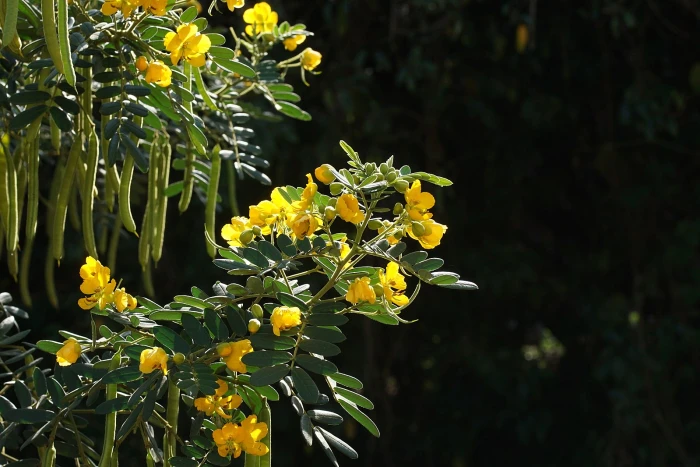Alexandrian Senna
(Senna alexandrina)
Alexandrian Senna (Senna alexandrina)
/
/

Vengolis
CC BY-SA 4.0
Image By:
Vengolis
Recorded By:
Copyright:
CC BY-SA 4.0
Copyright Notice:
Photo by: Vengolis | License Type: CC BY-SA 4.0 | License URL: http://creativecommons.org/licenses/by-sa/3.0/ | Uploader: Vengolis | Publisher: Wikimedia Commons |

















Estimated Native Range
Climate Requirements
| • Precipitation | 2" - 3" |
| • High Temp. | 89°F - 109°F |
| • Low Temp. | 44°F - 68°F |
Summary
Senna alexandrina, commonly known as Alexandrian Senna, is an evergreen perennial herb that is native to various ecosystems including savannahs, grasslands, and arid desert regions of Africa. It typically grows to a height of 0.5–1 meter (20" to 40"), though it can occasionally reach up to two meters (6’) under optimal conditions. The plant features a branched, pale-green erect stem with long spreading branches. Each branch bears four or five pairs of feathery, pinnate leaves that are arranged in mutual pairs. The yellow flowers, which may fade to brown, are large and showy, arranged in racemes, and bloom in the interior of the plant. Following flowering, it produces distinctive horned legume fruits that are broadly oblong, compressed, and flat, each containing about six seeds.
Alexandrian Senna is valued for its medicinal properties, particularly its use as a natural laxative derived from the dried leaflets and pods. It is also appreciated for its ornamental qualities, such as its attractive foliage and bright yellow flowers. In cultivation, it is used in herb gardens, as a border plant, or for naturalistic plantings. Alexandrian Senna requires full sun exposure, medium amounts of water, and well-drained soils to thrive. While it is relatively low-maintenance, it may need protection from frost in cooler climates.CC BY-SA 4.0
Alexandrian Senna is valued for its medicinal properties, particularly its use as a natural laxative derived from the dried leaflets and pods. It is also appreciated for its ornamental qualities, such as its attractive foliage and bright yellow flowers. In cultivation, it is used in herb gardens, as a border plant, or for naturalistic plantings. Alexandrian Senna requires full sun exposure, medium amounts of water, and well-drained soils to thrive. While it is relatively low-maintenance, it may need protection from frost in cooler climates.CC BY-SA 4.0
Plant Description
- Plant Type: Herb
- Height: 2-2.8 feet
- Width: 1.5-2.5 feet
- Growth Rate: Moderate
- Flower Color: Yellow
- Flowering Season: Summer, Fall
- Leaf Retention: Evergreen
Growth Requirements
- Sun: Full Sun
- Water: Medium
- Drainage: Medium, Fast
Common Uses
Bee Garden, Bird Garden, Butterfly Garden, Low Maintenance
Natural Habitat
native to various ecosystems including savannahs, grasslands, and arid desert regions of Africa
Other Names
Common Names: Egyptian Senna, Tinnevelly Senna, East Indian Senna, Bombay Senna, Indian Senna, Tinnevelly Senna, True Senna, Senna, Séné De La Palthe, Senna Makki
Scientific Names: Cassia senna, Cassia acutifolia, Senna alexandrina, Senna acutifolia, Cassia alexandrina
GBIF Accepted Name: Senna alexandrina Mill.